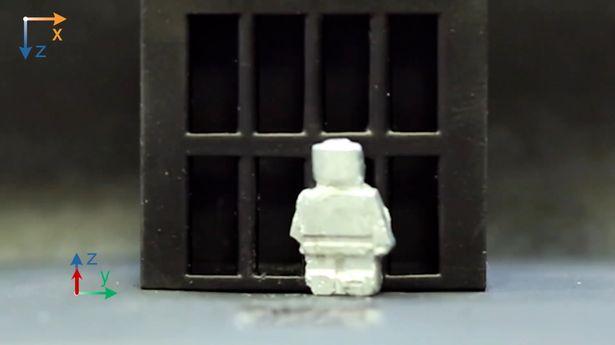Fans of the film “Terminator 2: Judgment Day” may recall the horrifying scene in which the killer robot transforms into liquid metal and slides through the prison cell bars. Real-world scientists are already converting dreams into reality. A team of engineers is developing a Terminator-style shapeshifting robot that can transform from a solid to a liquid and reconstruct itself.
Amazing video footage shows a human-shaped figure escaping a cage by transforming into liquid metal and regenerating on the other side of the bars. The international team was inspired by the sea cucumber when building microscopic robots that can switch between liquid and solid states quickly and reversibly. In addition to shapeshifting, the engineers claim their robots are magnetic and can conduct electricity.
Researchers used magnets to command their miniature creations to melt. They recorded the robot transforming into an amorphous puddle to slither through the bars of a cage before miraculously reconstituting itself on the other side. The researchers published their findings on January 25 in the journal Matter. To perform this melting trick, the researchers heated the bot through a process known as magnetic induction, using a moving magnet to set up an electrical current inside the robot. The current melted the gallium, and the magnetic elements suspended inside caused it to be drawn toward the magnet.
“The magnetic particles here have two roles,” senior author Carmel Majidi, a mechanical engineer at Carnegie Mellon University, said in a statement (opens in a new tab). “One is that they make the material responsive to an alternating magnetic field, so you can, through induction, heat the material and cause the phase change.” “But the magnetic particles also give the robots mobility and the ability to move in response to the magnetic field.”
The team is also testing the robots’ ability to remove a foreign object from a model’s stomach and deliver medications on-demand into a patient’s body. Additionally, the study demonstrated how the material could work as “smart soldering robots,” creating and repairing wireless circuits, and serving as a universal “screw” for assembling parts in hard-to-reach spaces.

